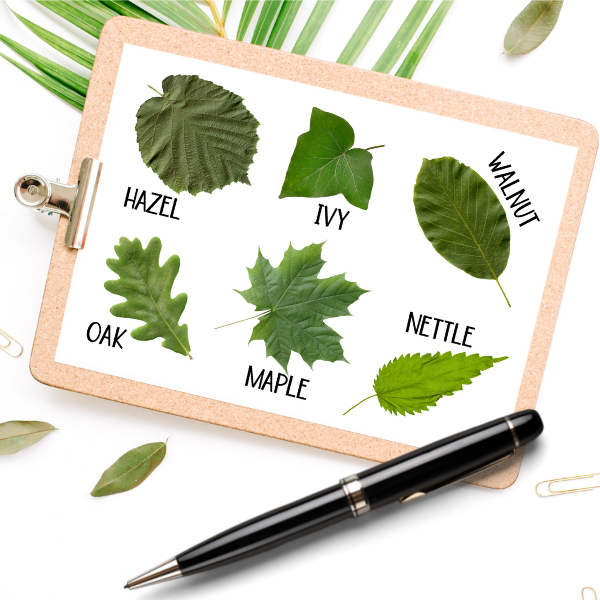Do you want to help your pupils identify trees and other plants in their local environment? In this blog post, I’ll talk through how to make a simple leaf identification key for your school grounds*. By making your own leaf key, you’ll know it will be specific to the flora that children will encounter daily, helping them get to know the nature around them. And, it can be used time and time again.
*If you are home schooling, you can do this too – just use leaves from your garden or local park.
Step 1: Identify the plants in your school grounds
This is best done in spring or summer when deciduous trees are in leaf. Make a list of common plants. If you’re not sure about species, a local nature group or gardening club may be able to help you. There are also several plant identification apps you could use. Leafsnap is great and it has a free option.
Step 2: Choose some leaves
Pick some leaves from each plant. Choose leaves that are relatively flat (you’ll see why later) and avoid or cut off any thick stalks. Depending on the variety in your grounds, you may not want to use every plant so just choose a selection of common species.

Step 3: Making the leaf key
Take a sheet of white paper and glue the leaves down. Write the name of each plant underneath its leaf.
Step 4: Make copies
When the glue is dry, carefully place your leaf key on a photocopier and make colour copies. Laminate for durability (especially in rain) and use year after year!
How to use the key
Children can use the shape, colour, vein pattern and other features of the leaves on their key to start identifying plants around the school.
Use the key for basic nature study activities in your school grounds, for observing seasonal changes, or as a lunchtime science activity that children could do independently.
Once children have identified what trees and other plants are present, they could start creating a nature map of the school grounds. Their knowledge can also lead to deeper study around what sort of environmental conditions each plant prefers, and how they support other types of wildlife (e.g. what eats them/what animals they provide shelter for).
Have you picked up my sunflower life cycle freebie yet?
Before you go, don’t forget that you can download a free sunflower life cycle activity when you sign up to my email list. Be first to hear about blog posts and new resources, as well as other fun ideas for teaching natural science.

